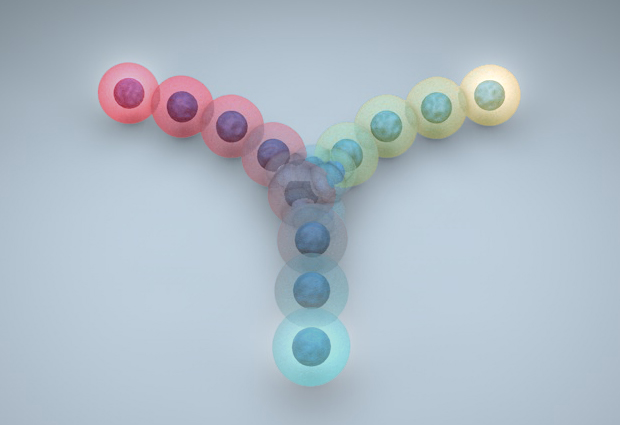
Fresh insight into how immune cells fight malaria
Secrets of immune system’s response to malaria revealed by single-cell genomics

The immune system is extremely complex. It responds to disease by developing many specific types of immune cells – some that fight and some that observe and remember. A joint study by the European Bioinformatics Institute (EMBL-EBI), the Wellcome Trust Sanger Institute and QIMR Berghofer Medical Research Institute, Australia, reveals for the first time how immature immune ‘T’ cells in mice choose which skill they will develop to fight malaria infection.
To tackle infection, immature T cells develop into subtypes – T helper1 (Th1) and T follicular helper (Tfh) – that fulfil different functions. Th1 cells are needed in the early stages of an infection because they help eliminate parasites from the bloodstream. Instead, Tfh cells play a bigger part in longer-term immunity.
The exact molecules that encourage the T cells to develop into one form or the other are not well understood.
In this study, published in Science Immunology, the researchers used single-cell RNA sequencing to take high-resolution ‘snapshots’ of the active genes produced by each individual T cell in a mouse infected with malaria. The team put the snapshots together and reconstructed a T cell’s development from ‘immature’ to fully specialised.
Here, Oliver Stegle, Research Group Leader at EMBL-EBI and Sarah Teichmann, Head of Cellular Genetics at the Wellcome Trust Sanger Institute, explain.
What did you find?
Oliver: Using the latest single-cell genomics technology and machine learning methods, we uncovered the ‘conversations’ that are taking place amongst immune cells. We were able to model the way mouse immune cells respond to the malaria parasite. We can also see how they change over the course of the infection. That gives us a valuable tool for approaching many different biological questions, such as which genes to target in order to boost immunity to malaria.
The data also allowed us to identify tens or perhaps hundreds of genes within the T cells that may be involved in controlling antibody production during malaria infection. These genes could help researchers to develop new drugs to boost immunity to malaria and other infections. For example, one of the genes we found, Galectin 1, encouraged the development of a particular type of T cell when active.
Why does it matter?
Sarah: Activity in these genes may help the body, for example in curing an infection. But equally, it may allow cancerous cells to flourish. Researchers can use the principles and the computational methods we developed in future studies exploring these questions. For example, the GPfates modelling system we used in the study and the Plasmo TH database that facilitated discovery of novel factors controlling TH1/TFH fate commitment are freely available.
An important next step for our collaboration will be to test many of these new gene targets. This will allow us to see if they respond to drugs that aim to boost immunity to malaria.
To find out more about single-cell genomics and the computational methods employed in this study, read the full story here.
This post was originally published on EMBL-EBI News.


